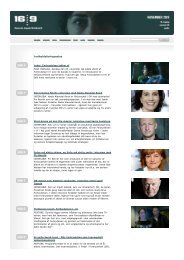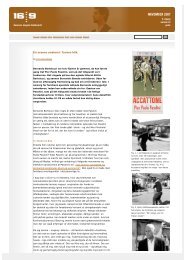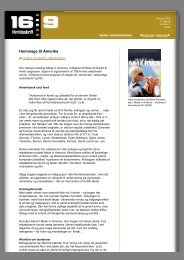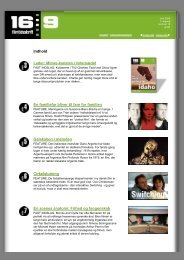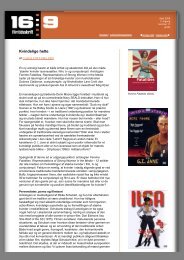Create successful ePaper yourself
Turn your PDF publications into a flip-book with our unique Google optimized e-Paper software.
His "Who are you?" outside the opera is hardly a request for her name.It is quite probable that he knows her as Stauffer's wife. What would beinvolved in his remembering her name is a world away from what itwould mean to be told it.Stefan would at last be preferring knowledge to mystery. His "Who areyou?" is not only "Where have I seen you before?" but "Why does itmatter?" He is asking Lisa to tell him her role in his life - a questionwhich it will take Lisa the whole of her letter to define and which Lisacan present only from Lisa's point of view. Stefan's "Who are you?"believes that the answer on this woman's significance for him mustcome from outside himself. It requires notions of perfection andromantic destiny - "that one face among all others" - at least aspowerful as those that govern Lisa. (And it requires unattainability,which means that Lisa's presenting herself as a married womanavailable for seduction can only make her one of the "usual things".)If Lisa neither addresses nor signs her letter, these functions areperformed for her - both of them - by John. In their essays on Letterfrom an Unknown Woman Stanley Cavell and George M. Wilson havedrawn attention to his role as signatory, seeing it as Ophuls'acknowledgement of authorship [*5]. But John's role in recalling Lisa'sname - effectively, for Stefan, giving her a name - continues his role asthe bearer of her letter (which can also be seen as his delivery of thescreenplay). When Stefan arrives home at the start of the film he isintending to make a quick departure from Vienna to avoid a duel. Hehas given his orders and is walking away, almost out of shot, whenJohn summons him back into the corridor with a touch (as if to remindhim of <strong>som</strong>ething he has forgotten) and goes to fetch a silver salver onwhich the letter sits unopened. Making the delivery of the letter aninterruption in Stefan's movement and a reversal of its directionanticipates the pattern of his encounters with Lisa. The action offetching and offering the letter is elaborated to stress John's role asintermediary. This elaboration stands in contrast with the absence ofattention to the writing on the envelope, and is a stylistic decision in linewith the definition of the letter as an object that sits unattended in thehallway, waiting for Stefan. It is placed near the centre of the frame andgiven quite a glow by Franz Planer's lighting. Among the rejectedoptions were to have the letter delivered after Stefan's return, to have itoffered to him as one of several (Zweig's way), or to have him find it onhis desk without John's aid.The transmission of the letter allows for a strengthening of John's partin the palindromic patterns of the film's start and finish. Palindrome is aspecial case of repetition and variation where the elements of the firstpart are repeated in reverse order in the second so that the approach tothe end is also a return to the start. The clear reversal of the openingimage in the closing one, as the departing carriages mirror Stefan'sarrival, articulates the framing of Lisa's story by Stefan's. Matched setsof gestures, immediately before and straight after Stefan's reading ofthe letter, help to mark the palindromic pattern because the gesturesare more striking and less in the flow of the action than, say, John'sholding the door open for Stefan at the start and closing it on him at theend. I refer to the gestures in which Stefan attends to his eyes. Havingthrown the letter onto his desk, Stefan pinches the corners of his eyesin a gesture of tiredness; he then walks to the bathroom, removing t<strong>hele</strong>tter from its packet, and sluices his eyes with water at the washstand.At that moment his attention is caught by the letter's first statement. Aclose-up of the writing is answered by a close-up of Stefan, his face wetwith beads of water. He picks up the letter and takes a towel to dab atthe drops as he goes to begin his reading.At the close of the final flashback, Stefan completes his reading onLisa's last "If only...", and we move from the letter's end page to a closeshot of Stefan, tracking in to glimpse the tears in his eyes. Then in thewake of the fragmentary, misted images that suggest his effort to graspa memory of Lisa - scenes from the past that haunt but that cannot beheld - we see in close-up the gesture that Stanley Cavell takes as thestarting-point for his discussion: "his response... is to cover his eyes



